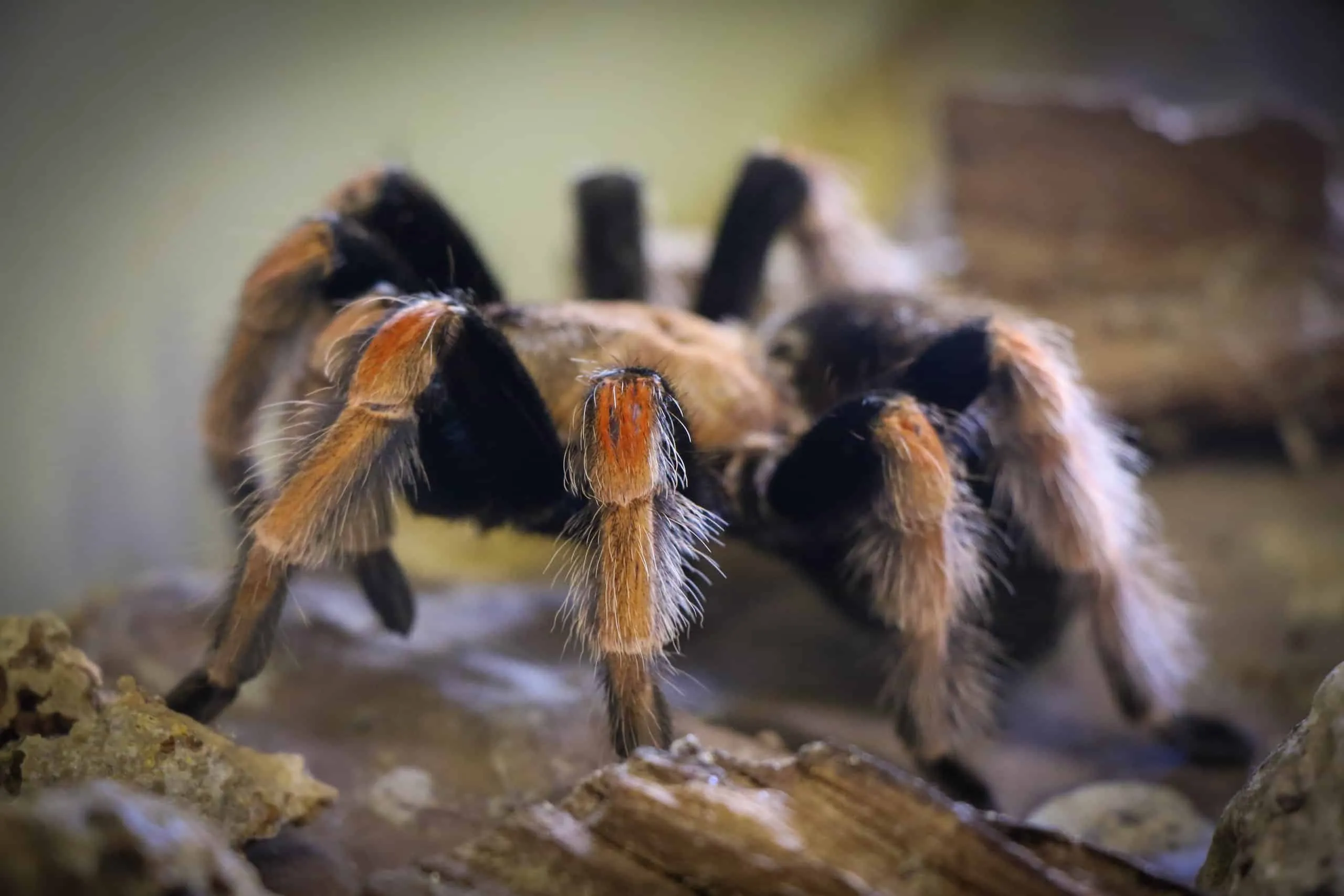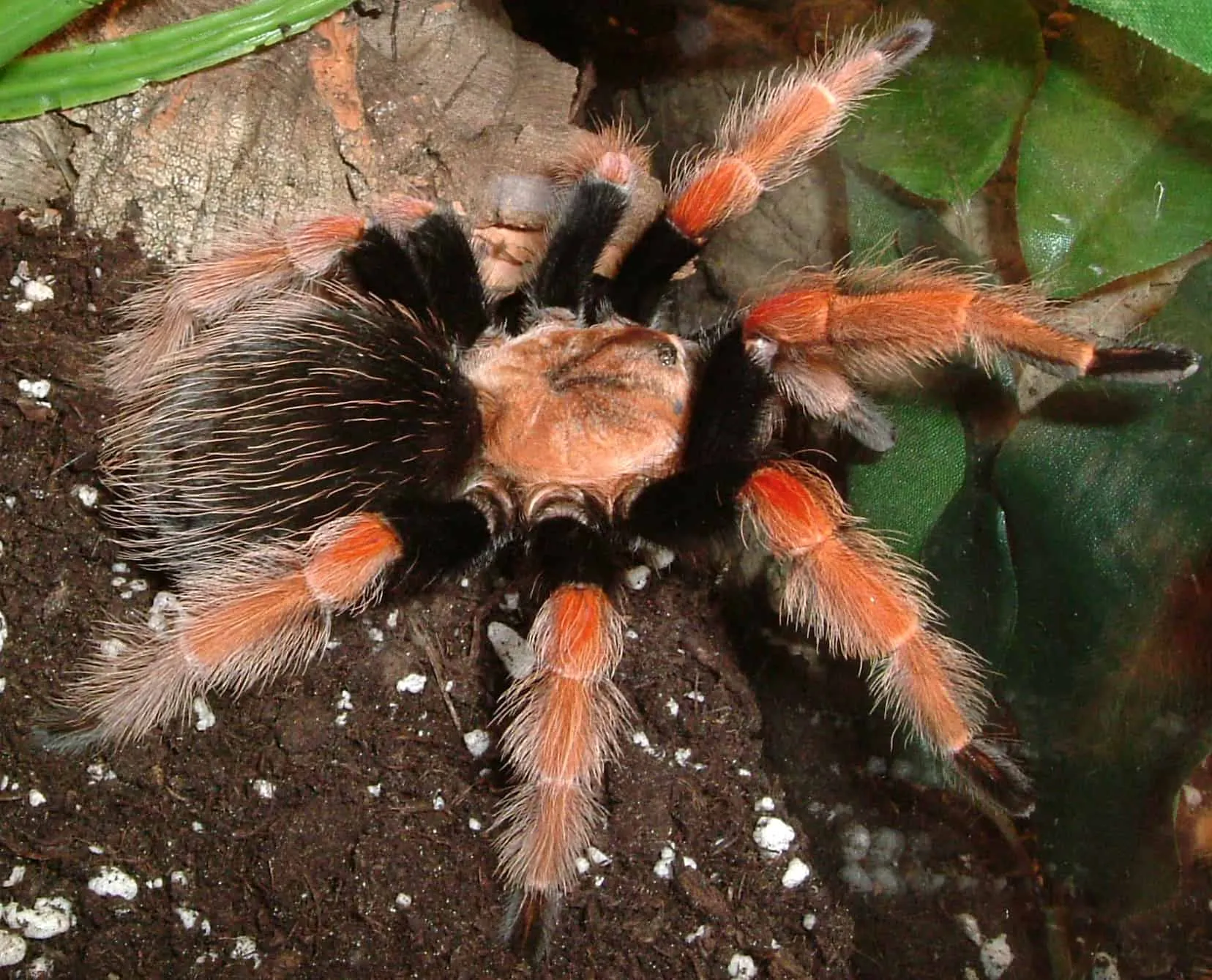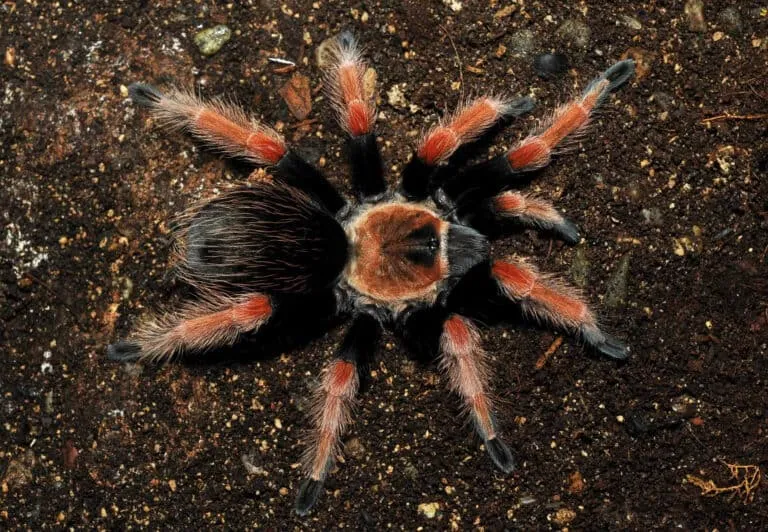Mexican Fireleg Tarantula Overview
The Mexican Fireleg Tarantula (Brachypelma boehmei) is a captivating arachnid, highly sought after in the pet trade due to its striking coloration and relatively docile temperament. Native to the Pacific coast of Mexico, this species is known for its vibrant orange-red hairs on its legs, contrasting beautifully with its black carapace and abdomen. These tarantulas are not only visually appealing but also relatively easy to care for, making them a popular choice for both novice and experienced tarantula keepers. Understanding the basics of their biology, behavior, and care is crucial for anyone considering owning one of these fascinating creatures. This article will delve into the top 5 facts about Mexican Fireleg Tarantulas.
Appearance and Characteristics
One of the most defining features of the Mexican Fireleg Tarantula is its striking appearance. The most prominent characteristic is the bright orange-red hairs that adorn its legs, which give it its common name. The carapace, the upper shell of the cephalothorax, is typically black, as is the abdomen, although the abdomen can sometimes have reddish hairs as well. These tarantulas are medium to large in size, with females typically reaching a leg span of up to 6 inches (15 cm) or more, while males tend to be slightly smaller. Their bodies are covered in dense hairs, which serve sensory functions and contribute to their overall appearance. The contrast between the black body and vibrant leg hairs makes this species a truly eye-catching pet.
Identifying Features

Identifying a Mexican Fireleg Tarantula is relatively straightforward due to its distinctive coloration. The key feature is the orange-red hairs on the legs, which are the most vivid and striking aspect of its appearance. The black carapace and abdomen provide a stark contrast, further emphasizing the leg color. It is important to note that the coloration can sometimes vary slightly depending on the individual and its molt cycle, but the presence of the orange-red hairs is the primary indicator. When observing a Mexican Fireleg Tarantula, pay attention to this key detail to confirm its identification.
Habitat and Native Range
Mexican Fireleg Tarantulas are endemic to the Pacific coast of Mexico. Their natural habitat consists of tropical deciduous forests and scrublands, where they thrive in a warm and relatively humid environment. They are typically found in burrows or beneath rocks and logs, providing them with shelter from predators and the elements. Understanding their natural habitat is crucial for providing appropriate care in captivity, as replicating these conditions can significantly contribute to their well-being and longevity. They are well-adapted to the climate and conditions of their native region.
Where They Live
In the wild, Mexican Fireleg Tarantulas create burrows in the ground or utilize natural shelters under rocks and logs. These burrows provide protection from the sun, predators, and fluctuating temperatures. They line their burrows with silk, creating a comfortable and safe environment. In captivity, it’s essential to provide a suitable enclosure that mimics this natural habitat, including appropriate substrate for burrowing and hiding places to ensure the tarantula feels secure and comfortable.
Mexican Fireleg Tarantula Behavior

The behavior of a Mexican Fireleg Tarantula is generally considered to be quite docile compared to some other tarantula species. They are typically not aggressive, and when threatened, they often prefer to flee or flick urticating hairs (tiny, irritating hairs on their abdomen) as a defense mechanism rather than bite. Understanding their behavior is essential for safe handling and interaction. They are primarily nocturnal creatures, being most active during the night, and spend a significant amount of time in their burrows or hiding places during the day.
Temperament and Handling
Mexican Fireleg Tarantulas are generally considered to be good-natured and are known for their calm disposition. However, it’s important to remember that they are still wild animals and should be handled with care and respect. While they are not prone to biting, they can bite if they feel threatened or startled. It’s advisable to handle them as little as possible and always ensure the safety of the tarantula and the handler. Gradual movements and a calm approach are the keys to a successful and safe handling experience.
Defensive Mechanisms
When threatened, the Mexican Fireleg Tarantula employs several defensive mechanisms. The most common defense is to flick urticating hairs from their abdomen towards a perceived threat. These hairs can cause significant skin irritation and discomfort. They may also attempt to flee or adopt a defensive posture, raising their front legs and displaying their fangs. Biting is a last resort for this species and is not as common as other defense strategies, but it can still occur if the tarantula feels cornered or severely threatened. Understanding these defense mechanisms is crucial for safe handling and minimizing stress for the tarantula.
Are They Poisonous?

The term “poisonous” is often misused when discussing tarantulas. Tarantulas are venomous, not poisonous. Venom is injected through fangs, while poison is ingested or absorbed. Mexican Fireleg Tarantulas are venomous, meaning they possess venom that they inject into their prey or, in rare cases, a perceived threat. The venom is used to subdue prey and is not typically life-threatening to humans, though it can cause discomfort.
Venom and Toxicity
The venom of the Mexican Fireleg Tarantula is generally considered to be of low toxicity to humans. The effects of a bite are usually localized and can include pain, redness, swelling, and itching at the bite site. Systemic effects, such as nausea or fever, are rare. The venom’s primary purpose is to immobilize prey. While the venom is not deadly to humans, it can cause a certain degree of discomfort. It is important to note that individual reactions can vary, and some people may experience more severe symptoms.
Effects of a Bite
If bitten by a Mexican Fireleg Tarantula, the primary effects are typically localized around the bite site. Common symptoms include sharp pain, which may be followed by redness, swelling, and itching. Some people may experience muscle cramps or stiffness. Systemic symptoms such as nausea or fever are very rare. Medical attention is usually not required, but it is advisable to clean the wound with soap and water to prevent infection and monitor for any unusual symptoms. Applying a cold compress can help to reduce pain and swelling.
Mexican Fireleg Tarantula Diet

In the wild, the Mexican Fireleg Tarantula is an opportunistic predator, feeding on insects, small invertebrates, and sometimes even small vertebrates. In captivity, they can be fed a variety of insects, such as crickets, mealworms, and roaches. Providing a balanced diet is crucial for their health and well-being. The diet should consist of live prey that are of an appropriate size, so that the tarantula is not overwhelmed.
What They Eat
The diet of a Mexican Fireleg Tarantula primarily consists of insects. Crickets are a staple food source, as they are readily available and easy to provide. Mealworms and dubia roaches can also be offered, providing variety. Occasional offerings of larger prey items, such as small pinky mice, can be given, but should be done sparingly. The size of the prey should be appropriate for the tarantula’s size, with the prey usually being no larger than the tarantula’s body length. Ensure the prey is gut-loaded with nutritious food before feeding.
Feeding Frequency
The feeding frequency of a Mexican Fireleg Tarantula depends on its age and size. Spiderlings and juvenile tarantulas should be fed more frequently, typically every 2-3 days. Adult tarantulas can be fed less often, usually once or twice a week. Overfeeding should be avoided, as it can lead to health problems. It is essential to monitor the tarantula’s abdomen; if it is noticeably large and round, it likely doesn’t need to be fed. Always remove uneaten prey within 24 hours to prevent stress for the tarantula.
Mexican Fireleg Tarantula Care

Caring for a Mexican Fireleg Tarantula involves providing a suitable enclosure, maintaining the correct temperature and humidity levels, and offering a balanced diet. Regular maintenance, such as removing uneaten food and replacing the substrate, is also essential. With proper care, these tarantulas can live for many years in captivity. Researching and understanding the tarantula’s specific needs is crucial for ensuring its health and well-being. Providing a suitable habitat is very important.
Enclosure Setup
The enclosure should be a secure and appropriately sized terrarium. For an adult, a 10-20 gallon tank or similar is suitable. The enclosure should have a secure lid to prevent escapes. The substrate should be deep enough for the tarantula to burrow, a mix of coconut fiber, peat moss, and vermiculite works well. Provide a hide, such as a piece of cork bark or a hollow log, for the tarantula to feel secure. A shallow water dish should be available at all times. The setup should be clean, easy to maintain, and promote the tarantula’s health and comfort.
Humidity and Temperature
Maintaining the correct humidity and temperature is crucial for the health of a Mexican Fireleg Tarantula. The ideal temperature range is between 75-85°F (24-29°C). A heat mat placed on the side of the enclosure can help maintain this temperature. The humidity level should be maintained at 60-70%. This can be achieved by misting the enclosure with water every few days and ensuring the substrate is kept slightly damp. Monitor the temperature and humidity levels with a thermometer and hygrometer.
Why They Are Awesome

The Mexican Fireleg Tarantula is a captivating species for a multitude of reasons. Its striking appearance, with vibrant orange-red legs and contrasting black body, makes it visually stunning. They have a relatively docile temperament, making them manageable for keepers. They are hardy and relatively easy to care for, making them great for beginners. Their unique characteristics and relatively low maintenance requirements make them an excellent choice for those looking for a fascinating and rewarding pet.
